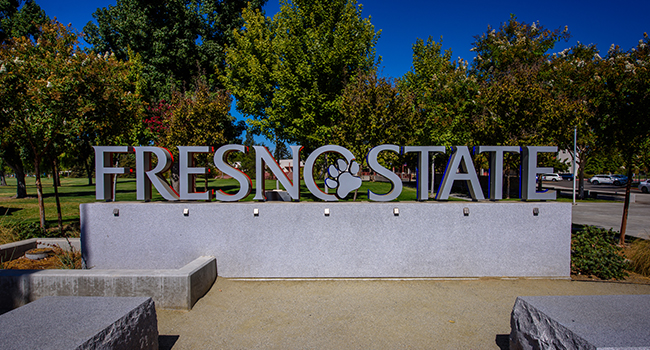
Fresno State Campus Police Collaborate with Local Law Enforcement Agencies on Security
Because of its location, California State University, Fresno benefits from not only its Campus Police Department, but an additional three law enforcement agencies. Jurisdiction over Fresno State is shared by the Fresno State Police Department, Fresno Police Department, Clovis Police Department and the California Highway Patrol.
- By Jessica Davis
- March 01, 2019
Because of its location, California State University, Fresno benefits from not only its Campus Police Department, but an additional three law enforcement agencies. In total, jurisdiction over Fresno State is shared by the Fresno State Police Department, Fresno Police Department, Clovis Police Department and the California Highway Patrol.
According to Amy Luna, emergency operations manager at Fresno State, the campus police department is usually responsible for the jurisdiction of the campus. However, depending on the nature and severity of a crime, another agency may have to assume command of certain cases and investigations.
Luna said that the Fresno PD has more extensive resources and a larger staff than the campus department. The Fresno State PD has 27 sworn officers at present, Luna said, and Fresno Police Chief Jerry Dyer said his force currently has 812 officers.
According to Dyer, police response times on the campus are some of the fastest in the city, but the crossing boundaries of the various law enforcement agencies can lead to complications.
“When they call 911, sometimes there’s some confusion about who has responsibility,” Dyer said. “Within the city of Fresno — within that geographical boundary that we have — we have several of what’s called county islands.”
The county islands include Mayfair, Fig Garden, Calwa and Fresno State, which are small areas within the city limits of Fresno. County islands generally fall under the jurisdiction of the Fresno County sheriff’s office; Fresno State is covered by campus police. Dyer said that depending on the severity and potential danger of a crime, Fresno police may respond to calls in these areas.
Luna said that on the campus of Fresno State, only landline emergency 911 calls are directed to campus police, but calls from mobile phones are directed to Fresno city police.
“Because of our proximity to the city of Fresno and the freeway, 911 calls on campus that are from cell phones go to Fresno PD first,” Luna said. “If Fresno PD’s 911 center received a call and someone said they had an emergency and they were in the library at Fresno State, then they would transfer that call to our 911 line.”
Luna said that campus police use resources like electric motorcycles to respond to on-campus emergencies as quickly as possible. While the campus’ geographic footprint is only 388 acres of developed area, its facilities total more than 3 million total square feet.
The Fresno State PD has developed strong partnerships with the other local agencies to increase its coverage and presence on campus and surrounding area, as well as secure the campus more thoroughly.
Luna said Fresno State PD and the Fresno PD cooperate to ensure proper coverage and quick response times to incidents on and near the campus. Their cooperation includes join security efforts at campus events with high attendance.
Despite the complications of overlapping jurisdictions, Luna said that campus police and the Fresno PD have a positive working relationship where both cooperate to ensure the Fresno State community is safe and secure.
Dyer said he believes the cooperation between agencies strengthens the coverage and effectiveness of each department.
“The word separate doesn’t cross my mind,” Dyer said. “The word that comes to mind is how do we partner on both sides.”
About the Author
Jessica Davis is the Associate Content Editor for 1105 Media.